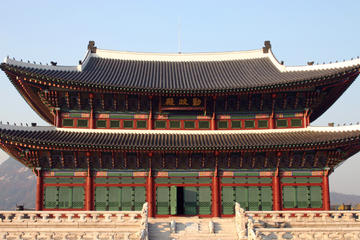
Gyeongbokgung Palace
Most commonly referred to as the Northern Palace because of its location compared to the other palaces of Seoul, Gyeongbokgung is a stunning reminder of the Joseon Dynasty, with elements of the complex still intact from that time, despite the wars and occupations that have since happened. The Gyeonghoe-ru pavilion and Hyangwonjeong pond are gleaming examples of that reminder, helping Gyeongbokgung become arguably the most stunning of the five palaces.
Originally built in the 14
th century, the main gate of the palace is the only thing dividing the once royal quarters from one of the busiest parts of the city. The grounds of the palace contain a number of structures you may not see all of on your first trip, including Geunjeongmun (the Third Inner Gate), Geunjeongjeon, (the Throne Hall) and Sajeongjeon (the Executive Office). The palace also contains a royal banquet hall, a royal study, and of course, the queen's and king's quarters.
Also located within the palace grounds is the National Folk Museum of Korea, which features over 98,000 artifacts and presents a thorough overview of the history and culture of Korea.
Practical Info
The palace grounds are open most days of the week except Tuesday, with interchanging operational hours depending on what months you are going.
For a nominal admission fee of between 1,500 to 3,000 won, you get access to the palace. With the option of an integrated ticket price of 10,000 won, you get access to Changdeokgung Palace, Changgyeonggung Palace, Deoksugung Palace, and Gyeongbokgung Palace, amongst a few other destinations. Interpretation services are also offered in English.
Access to the palace is also quite easy, take either subway line 5 to Gwanghwamun Station or line 3 to Gyeongbokgung Station.
